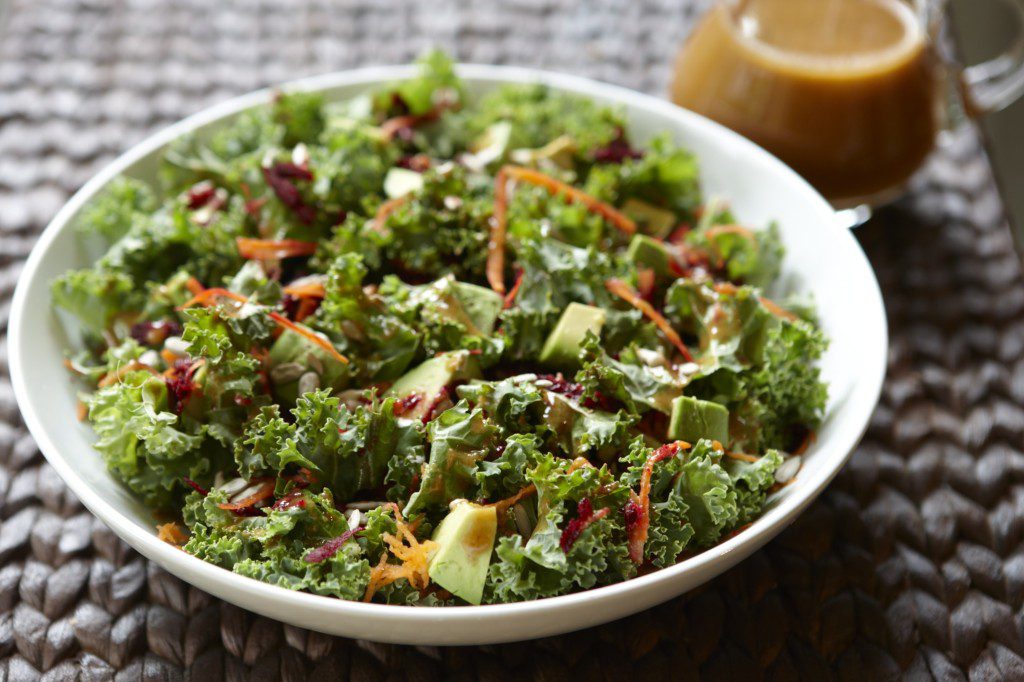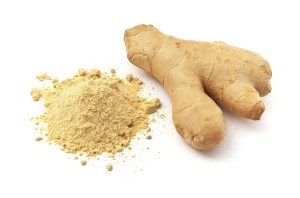Healthy Salads for Summer

-By Caela Fenton
We often think that by choosing to order the salad at a restaurant, or gunning for the salad bar at a buffet, or snagging the pre-made salad at the grocery store, we are opting for the healthier, or lower calories option then our friends. However, many restaurant salads and store-bought dressings pack a greater calorie and trans-fat punch than we think. For example, the chopped salad at Milestones, which features chicken, avocado, chick peas, veggies and feta in a lime cilantro vinaigrette, clocks in at 790 calories, which is a number that most people wouldn’t expect from the description.
Here are some tips for building healthy salads this summer.
Make the dressing yourself
Homemade dressing is much, much easier than most people assume. Chances are, all the ingredients that you need are already in your fridge.
Breezy Balsamic
– 2 tbsp olive oil
– 1/8 cup balsamic vinegar
– 1 tsp Dijon mustard
– 1 tsp fresh or dried thyme
Ginger Zinger
– ¼ cup lime juice
– 1/8 cup soy sauce
– 2 tbsp olive oil
– 1 ½ tbsp grated fresh ginger
Grapefruit with a twist
– 1/4 cup grapefruit juice
– 2 tbsp olive oil
– 1 tbsp honey
– ½ tbsp poppy seeds
Take advantage of seasonal produce
Salads are the perfect place to showcase fresh summer produce. Feel great about your nutritional choices and decision to buy local by building your salad with seasonal ingredients.

Summer produce:
– Peaches
– Peas
– Raspberries
– Strawberries
– Blueberries
– Corn
– Eggplant
– Zucchini
Make the easy swaps
Switch it up and use mixed greens, spinach or kale instead of iceberg or romaine lettuce for a nutritional boost. Dark green leafy vegetables are higher in iron, calcium and folate than their lighter green relatives.
If you usually depend on croutons for you crunch, be careful of how many you’re sprinkling on, as the calories can rack up quickly without adding very much nutritional value. If you must have croutons, consider crumbling a handful to sprinkle throughout.
If you’re up for a bigger switch, consider using slivered almonds or chopped walnuts for your crunch. Though nuts are calorie dense themselves, they are a source of healthy omega-3 fats. Studies on the consumption of walnuts have shown that their alpha linoleic acid (ALA) content contributes to heart health.
Another health-conscious swap is to trade dried fruit for fresh. If you usually sprinkle dried cranberries or raisins on your salad, trade them for fresh fruit. You’ll save a whack of unnecessary refined sugar.
Control your healthy fats
Using olive oil as a base ingredient for homemade dressing is a great way to incorporate those healthy omega-3 fats. Nuts, avocados and various cheeses are other great ways to incorporate healthy fats into your salad. We don’t recommend piling almonds, goat’s cheese and avocado all on the same salad. Choose one or two sources of fat for your meal and be portion conscious.
Power up with protein
Ever had a salad for dinner and then found your stomach rumbling an hour later? Chances are that in your quest for a low-calorie meal, you neglected the important protein component. Chicken isn’t the only thing you can add to a salad either!
Protein toppers
– Salmon
– Shrimp
– Chickpeas
– Lentils
– Steak
– Hardboiled egg
– Tofu
Play with textures
The best salads have incorporate a variety of texture. Mix it up for your mouth my having ingredients that are crisp, juicy, soft and crunchy, all in the same salad:
Crisp
– Lettuce
– Cucumber
– Red pepper
Juicy
– Tomato
– Berries
– Peach
Soft
– Avocado
– Roasted sweet potato
– Roasted beets
– Goat’s cheese
Crunchy
– Almonds
– Walnuts
– Roasted chickpeas
– Sunflower seeds
– Quinoa
Don’t be afraid to get unconventional
Don’t limit your salads to veggies alone, or be afraid to get a little bit weird. Salads are a great way to use up whatever you have left in your fridge, saving you time and money. If you’ve got kale and pomegranite, go for it. If you’ve got a sweet tooth, try using a dash of maple syrup in your dressing.
Apple cider vinegar? Ginger? Goji berries? Chia seeds? Salads are a great way to try out the latest nutrition trends without making them the base of your meal. Mix them into the dressing or sprinkle them on top and see if they fulfill their promise.
Think in terms of complimentary foods
Dark leafy greens are a great non-heme source of iron, but non-heme iron is not as easily absorbed by the body as heme iron from meat alternatives. To boost absorption, pair it with vitamin-C, such as a spinach salad with grapefruit segments. For the ultimate iron boost, barbeque pork tenderloin to slice on top.
Basket of assorted vegetables in fieldGrab from your own garden
Nothing is more satisfying than incorporating something that you grew yourself into a meal. Small herb planters containing thyme, rosemary and basil are not only attractive on a windowsill, but also add extra excitement to salads.

